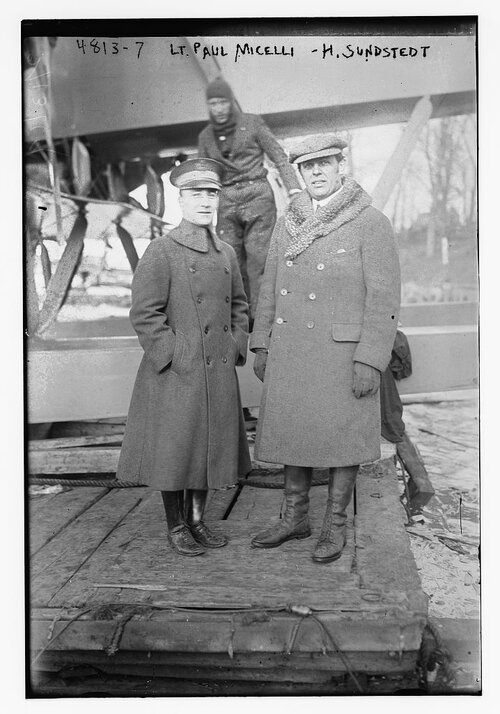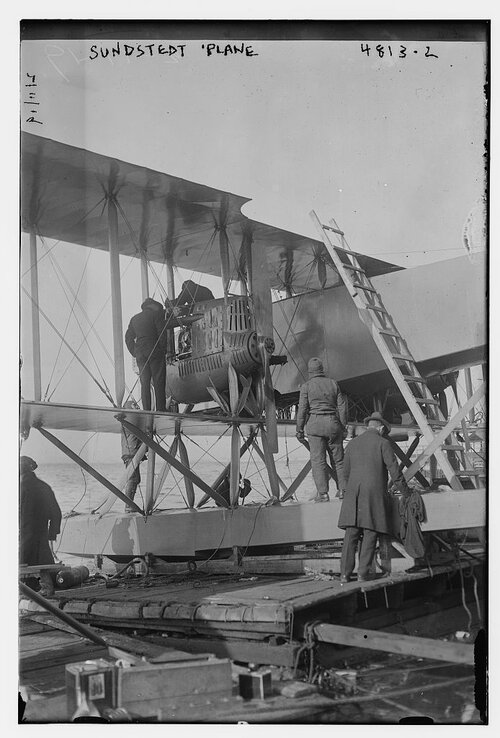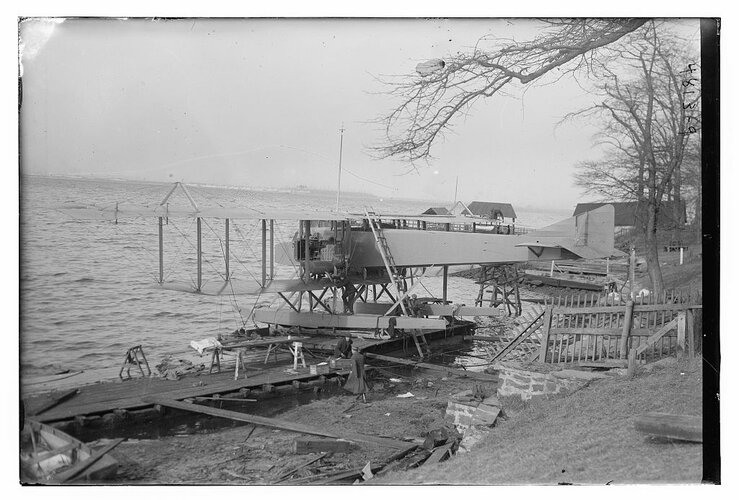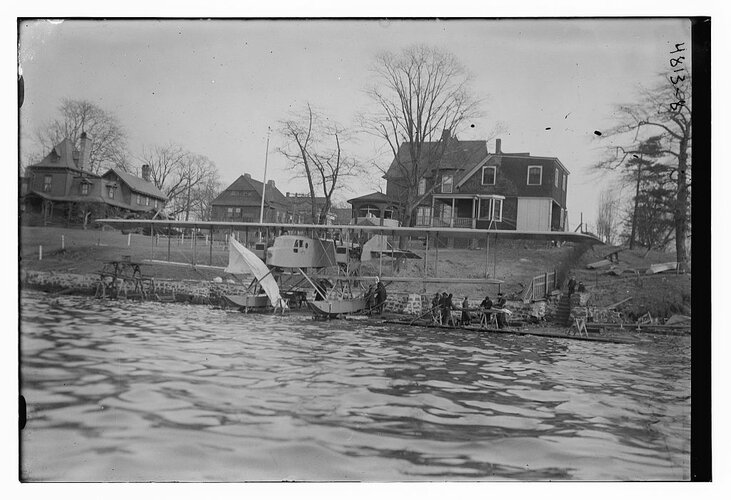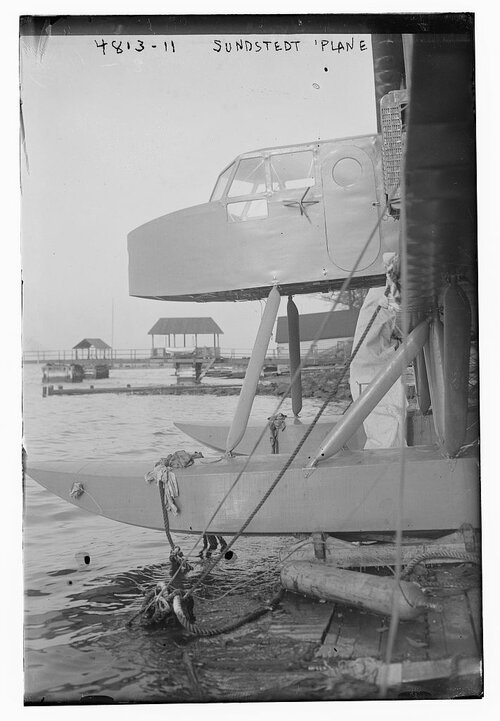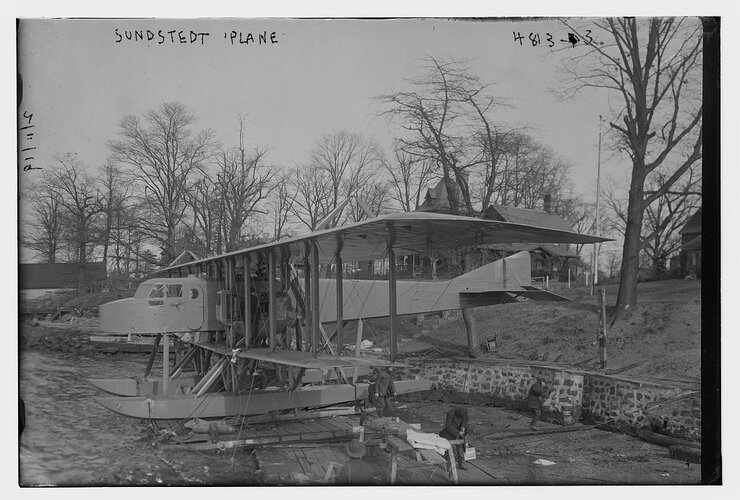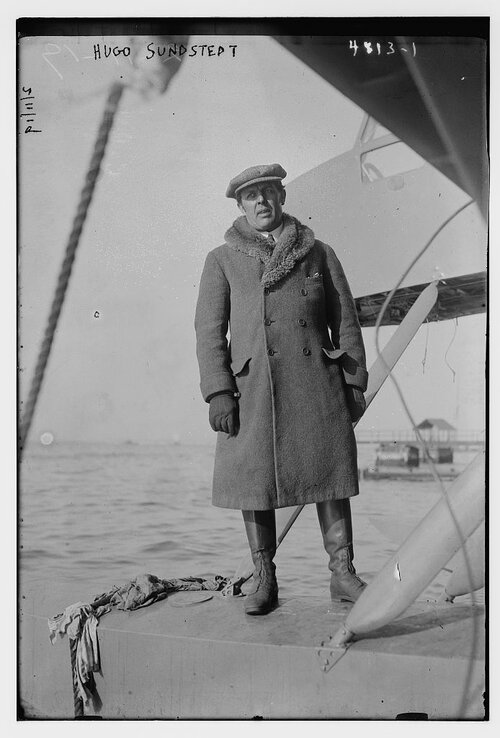Sundstedt was born as the fourth child of an unmarried woman in Örebro. The family lived in poor conditions and in 1892 he was auctioned off to a shoe dealer for 75 kroner. In 1897 he was adopted by businessman Olof Sundstedt. Now he had the opportunity to study, but since the study results were not good, in 1901 he applied for the Navy as a cadet. After he left the navy in 1904, he got a job in an office in Örebro. Not comfortable behind a desk, he applied for the merchant navy in October 1905, but he mustered out in Cardiff on 19 February 1906. He returned home to Sweden and was employed as a taxi driver in Stockholm in 1908, a job he held until 1911 In Stockholm, he got to know the car dealer Carl Cederström, who took an aviator's diploma in France in 1910, this piqued Sundstedt's interest. He started helping Cederström with the airplane for free, with the ulterior motive of gaining his own experience of flying, and eventually getting a pilot's license himself. He flew for the first time on 1 June 1912 with Cederström's old aircraft Blériot XI Nordstjernan. With some wealthy businessmen from Örebro as sponsors, he managed to buy Nordstjernan from Cederström. During one of his longer flights, on June 21, 1912, he broke the current Scandinavian altitude record, when he reached the top altitude of 1,800 meters during a two and a half hour flight over Malmen. He also pioneered cargo flights, when he airlifted a stack of newspapers. He was supposed to take the certification exams during the month of July, but a fatal accident involving a young woman who was hit by his airplane propeller led to an investigation, which is why the exams were canceled. After the investigation showed that he was innocent, the tests were carried out at the beginning of August 1912. He was thus the first Swede to receive his entire flight training in Sweden and largely on his own without a teacher. He was awarded Swedish aviator diploma number 9 from the Swedish Aeronautical Society (SAS) on 2 August 1912.
Sundstedt was very active as an aviator in 1912 and 1913, he participated in several air shows and made ascents around the country. On August 10, 1913, he made the first flight between Malmö and Stockholm in 14 hours and 35 minutes. In the fall of 1913, he sold the airplane Nordstjernan to Enoch Thulin. During the winter of 1914 he went to France to buy a Farman airplane, during the flight test in April of the airplane he crashed with the result that he had to stay in hospital for a few weeks before he could return to Sweden with his new airplane. He started the journey home in July 1914 from Buc in France and landed on a grass field in Malmö, where the aircraft flipped over. The aircraft was taken to Södertelge Verkstäder where it was to be repaired. When the First World War broke out on August 1, 1914, Sundstedt offered the aircraft to the Navy's Air Force. Both the aircraft and Sundstedt ended up in war service. He was appointed second lieutenant and placed in an air reconnaissance group in Karlskrona. He was active as a naval aviator until 1916, when he retired as a captain. In the fall of 1916, he left Sweden to work as an aviator in France, but since he failed to get any job offer, he continued the journey to the United States on the French steamship L'Espagnole. He stepped ashore in New York Harbor on New Year's Day 1917. In the United States, he worked on hydroplane designs, floats, transport planes and wing designs. In 1919, after spending some years studying meteorology and winds between America and Europe, he decided to construct the Sunset seaplane. With the aircraft, the idea was that he, together with the pilot Paul Micelli, would carry out a flight across the Atlantic with financial support from the banker Christopher Hannevig. During a transfer in the port, the aircraft was damaged and the intended departure had to be postponed due to repairs. It turned out that the economy put an end to further attempts by Sundsted to cross the Atlantic by air.
During the 1920s, Sundstedt worked for several different aircraft manufacturers, mainly with floatplanes. In 1924 he organized the Speed Boat Company. He formed his own consulting company, Sundstedt Aircraft Corporation, in 1934. The company designed a number of seaplanes for other aircraft manufacturers. His surviving writings and letters from 1919 to 1951 are preserved at the Wichita State University Special Archives.
